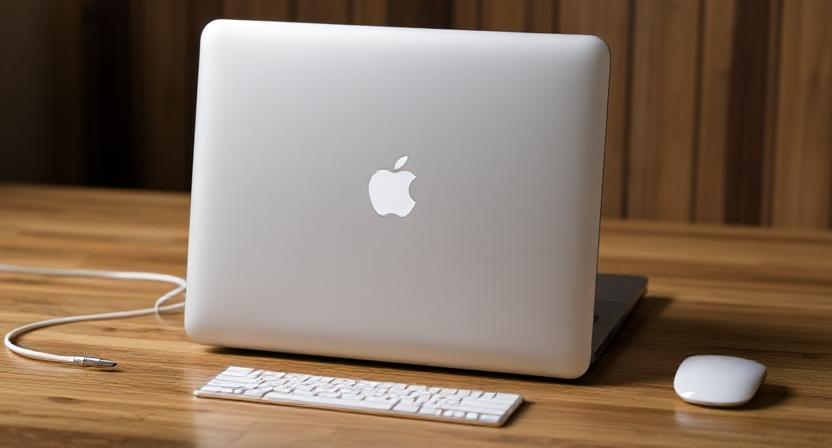That fleeting error message, a hilarious chat, a design masterpiece in progress – sometimes you just need to grab what’s on your Mac screen. Fear not, fellow Apple aficionados! This isn’t some cryptic digital ritual. Mastering Mac screenshots is surprisingly simple, and this guide is your key to unlocking its full potential. Forget fumbling with menus; we’re diving deep into every way you can capture, save, and share those precious pixels.
The Keyboard Shortcut Powerhouse: Your Speedy Snapshot Arsenal
For the everyday grab, the keyboard is your best friend. Apple has baked in intuitive shortcuts that put screen capture at your fingertips. Let’s break down the core commands:
1. The Grand Overview: Capturing Your Entire Display (Shift + Command + 3)
Imagine needing a complete visual record of everything on your screen – all your open windows, the pristine desktop wallpaper, the whole shebang. The Shift + Command + 3 combo is your go-to for this panoramic capture. Simply press and hold all three keys simultaneously. You’ll be greeted by the satisfying click of a virtual shutter (if your sound is enabled), and a small preview thumbnail will briefly grace the bottom-right corner of your display. Within moments, a .png file, your full-screen snapshot, will land neatly on your Desktop. It’s the quickest way to grab it all.
2. Precision Targeting: Capturing a Selected Portion (Shift + Command + 4)
Sometimes, the entire screen is overkill. You only need that specific section of a webpage, that particular corner of an image, or just the error message without the surrounding clutter. This is where the magic of Shift + Command + 4 comes in. Pressing these keys transforms your innocent cursor into a precise crosshair (+). Now, the power is in your drag. Click and hold your mouse button (or trackpad), then drag the crosshair to draw a rectangle around the exact area you want to capture. Once you’ve outlined your target, release the button. The familiar shutter sound confirms your selection, and a .png of your defined area appears on your Desktop.
Pro Tip: Fine-Tuning Your Selection in Real-Time
- Oops, Wrong Spot? Don’t fret! While you’re still holding down the mouse button and dragging, you can reposition your selection. Just press and hold the
Spacebar and continue dragging. The size of your selection will remain the same, but its location will shift. - Size Matters (But Proportions Too!): Need to adjust the size of your selection? Keep dragging! But what if you need to maintain the original proportions? Hold down the
Shiftkey while dragging. This will constrain the aspect ratio of your selection. - Centric Expansion: Want your selection to grow or shrink outwards from a central point? Press and hold the
Optionkey while dragging. This expands or contracts the selection area symmetrically around your starting point.
3. Window Wizardry: Capturing a Specific Window or Menu (Shift + Command + 4, then Space bar)
Tired of cropping out everything around a specific window? Mac offers an elegant solution. First, hit Shift + Command + 4 to bring up the crosshair. Then, tap the Space bar. Watch as the crosshair magically morphs into a camera icon (). Now, hover this camera over the window or even a dropdown menu you want to capture. As you do, the window will highlight, indicating it’s the target. A single click, and voilà! You get a clean screenshot of that specific window, and wonderfully, the background disappears, leaving you with just the window itself.
Bonus Window Trick: The Shadow Elimination Act
Want a super clean window capture without that subtle drop shadow? Before you click the camera icon on the window, press and hold the Option key. Click while holding Option, and the resulting screenshot will be the window sans shadow – perfect for clean design mockups or documentation.
4. Touch Bar Treasures: Capturing Your MacBook Pro’s Dynamic Display (Shift + Command + 6)
For those wielding the adaptable Touch Bar on their MacBook Pro, there’s a dedicated shortcut to capture its current display. Simply press and hold Shift + Command + 6. Just like the other full-screen captures, the image of your Touch Bar will be saved as a .png on your Desktop. It’s handy for sharing custom Touch Bar configurations or troubleshooting display issues.
The Screenshot App: A Modern Interface for Capture Control (macOS Mojave and Later)
Introduced with macOS Mojave (10.14), the Screenshot app provides a more visual and feature-rich way to handle your screen captures and even screen recordings. Access it with a simple shortcut:
Opening the Gateway: Launching the Screenshot App (Shift + Command + 5)
Pressing Shift + Command + 5 conjures a neat little toolbar at the bottom of your screen. This is your control center for all things screen capture and recording. Let’s explore its icons from left to right:
- Capture Entire Screen (The Solid Rectangle with a Dot): Clicking this and then clicking anywhere on your screen performs the same action as
Shift+Command+3. - Capture Selected Window (The Dashed Rectangle Around a Solid One): This mirrors the functionality of
Shift+Command+4followed by theSpacebar. Click this icon, hover over your desired window (it will highlight), and then click to capture. - Capture Selected Portion (The Dashed Rectangle): Selecting this icon brings up a draggable frame. Adjust its size and position to encompass the area you want to capture, then click the “Capture” button within the toolbar. It’s a more interactive way to achieve the same as
Shift+Command+4. - Record Entire Screen (The Circle Inside a Solid Rectangle): Ready to record a video of your entire screen activity? Click this icon, then hit the “Record” button. A stop recording icon will appear in your menu bar when you’re ready to finish.
- Record Selected Portion (The Dashed Rectangle with a Circle): Similar to capturing a selected portion, this option lets you define an area to record. Adjust the frame and click “Record.” Again, the stop recording icon in the menu bar ends the recording.
The Power of “Options”: Customizing Your Capture Experience
Clicking the “Options” menu within the Screenshot app toolbar unveils a wealth of customization possibilities:
- “Save To”: Your Destination Choice: Decide where your screenshots and screen recordings land. The default is the Desktop, but you can choose Documents, Clipboard (for immediate pasting), Mail, Messages, Preview, or even a custom “Other Location.”
- “Timer”: The Delayed Action Hero: Need a few seconds to prepare your screen before the capture? Set a 5 or 10-second delay. Perfect for capturing fleeting animations or quickly navigating menus.
- “Show Floating Thumbnail”: Quick Preview and Action: After taking a screenshot, a small thumbnail appears in the bottom-right. Hover over it to quickly preview, annotate (markup), share, or even drag and drop the image into another application before it’s permanently saved.
- “Remember Last Selection”: Efficiency for Repetitive Tasks: If you frequently capture the same screen area, enable this. The Screenshot app will remember your last selected portion for the next time you use the “Capture Selected Portion” tool.
- “Show Mouse Pointer”: Making Your Clicks Visible: Useful for tutorials or demonstrating software, this option includes your mouse cursor in screenshots.
- “Show Mouse Clicks in Screen Recordings”: Visual Cues for Your Audience: When recording your screen, this option adds a visual indicator (a ripple effect) whenever you click, making your actions clearer to viewers.
- “Microphone (for recordings)”: Your Voice in the Mix: Choose the microphone you want to use for audio narration during your screen recordings.
The Clipboard Shortcut: Capture and Conquer (Paste Immediately!)
Sometimes, you don’t need a saved file. You want to grab an image and paste it directly into a document, email, or messaging app. The Control key is your ally here. By adding it to the standard screenshot shortcuts, you send the image directly to your clipboard:
- Full Screen to Clipboard (
Control+Shift+Command+3): Capture your entire screen and have it ready to paste withCommand+V. - Selected Portion to Clipboard (
Control+Shift+Command+4): Define your capture area, and the resulting image lands directly on your clipboard. - Specific Window to Clipboard (
Control+Shift+Command+4, thenSpacebar): Capture that clean window shot and paste it instantly.
The Legacy Option: Grab (For the Retro Mac User)
For those running older macOS versions (pre-Mojave), the built-in “Grab” utility was the standard screenshot tool. You can still find it lurking in the Utilities folder (Applications > Utilities). While it lacks the visual flair of the Screenshot app, it gets the job done with options for:
- Entire Screen: The classic full capture.
- Selection: Drag to capture a specific area.
- Window: Click to capture a specific window.
- Timed Screen: Set a delay before the capture – a feature now integrated into the Screenshot app.
Beyond the Basics: The World of Third-Party Apps
While macOS offers robust built-in screenshot tools, a vibrant ecosystem of third-party applications exists, offering even more advanced features. If your needs go beyond the basics, consider exploring these options:
- CleanShot X: A powerhouse with scrolling capture (perfect for capturing entire webpages), advanced annotation tools, the ability to hide desktop icons during captures, and a clean interface.
- Snagit: A professional-grade screen capture and recording tool with extensive editing capabilities, including adding effects, text, and more.
- Skitch (by Evernote): While simpler than CleanShot X or Snagit, Skitch excels at quick annotations, shapes, and sharing, especially if you’re an Evernote user.
- Lightshot: A free and incredibly user-friendly option for taking screenshots and quickly adding basic annotations before sharing.
Customize Your Capture: Reassigning Keyboard Shortcuts
For ultimate control, macOS allows you to customize the default keyboard shortcuts for screenshots:
- Navigate to Apple menu () > System Settings (or System Preferences).
- Click on Keyboard in the sidebar (or the Keyboard pane).
- Select Keyboard Shortcuts…
- In the left sidebar, find and click Screenshots.
- You’ll see a list of the standard screenshot shortcuts. To change one, simply double-click on the existing shortcut and press the new key combination you desire.
- Click Done to save your custom shortcuts.
Conclusion: Screenshot Savvy Achieved!
From quick keyboard grabs to the feature-rich Screenshot app and even third-party powerhouses, your Mac offers a versatile toolkit for capturing anything on your screen. By understanding these various methods and their nuances, you’ve now unlocked the secrets to screenshot mastery. So go forth, capture those moments, share your insights, and never miss a digital beat again!



